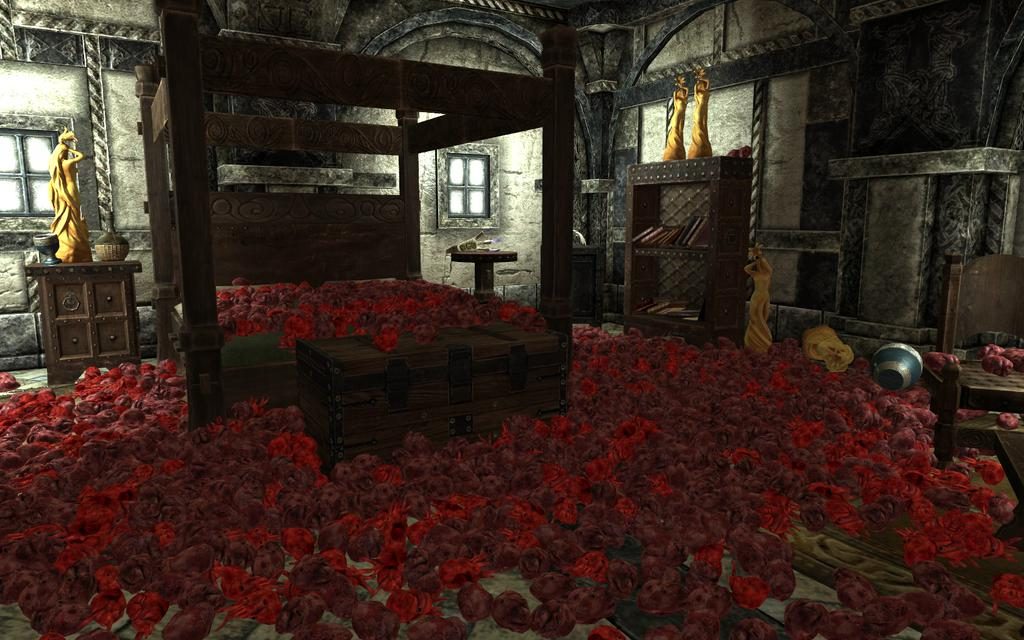Welcome to another week of top shelf videogame criticism, analysis, and commentary! We have some strong offerings for you this week, so let’s get right into them. It’s This Week in Videogame Blogging!
Making Marios
It’s Super Mario Bros‘s 30th anniversary this month, and the folks at AV Club’s Gameological Society got together to share their most surreal experiences with the games.
This special occasion also saw the release of, and critical reception to, Nintendo’s descendent of its WarioWare quick-and-dirty game design software, Super Mario Maker. Last week we shared a design chat with Shigeru Miyamoto (video); this week, Michael Thomsen’s penned a negative review of the title for the Washington Post, which has drawn criticism from several corners.
At Stay Classy, games scholar Todd Harper argues that to expect professional sophistication from Super Mario Maker is to miss the point:
Mario Maker is an example of what Chaim Gingold called a “magic crayon.” It’s a simplistic tool that abstracts the many and varied layers, toolsets, and skillsets of level design into something that a person without access to those things can still use to produce a tangible outcome. The tradeoff is that, because the tools are abstractions, they are less powerful and often more time-intensive than the alternative, because you are often running up against the limitations of the abstracted toolset, among other things.
[…]Lest this be read as bad, I think “magic crayon” toolsets are powerful because of their accessibility. Anna Anthropy’s work (such as Rise of the Videogame Zinesters) has discussed the power of democratizing game design and its ability to destabilize hegemonic game design norms. Magic crayons are often a necessary part of that because they make people feel like these goals are reachable.
Elsewhere, Carolyn Petit muses that what is missing from Mario Maker is a sense of continuity or a journey for the player:
You can share levels with other players, but those levels exist in isolation. Someone plays the level, and finishes it, and that’s it. You can’t create even a rudimentary world map to string, say, four or eight stages together, which I’d love to do. I want players to be able to design not just stages, but journeys for me to go on; the road to Bowser’s castle, the pleasant pathways and underground tunnels and flying fortresses that stand between me and King Koopa. I want to experiment with difficulty curves and figure out when and where to introduce new elements so that the places I create have a sense of identity.
This limitation has resulted in what Offworld’s Laura Hudson calls a “kitchen sink” approach to level design, frontloading levels with every toolbox asset and gimmick. She encourages designers to “slow your roll” because, as she puts it:
Unlike the original games, where each level was a link in a much longer chain that could build on ideas, teach new skills evolve over time, Super Mario Maker levels are elevator pitches where you have to get in, wow the crowd, and get out. You’re not writing a novel with distinct chapters, you’re scripting a one-act play that has to say everything it wants to say before the player reaches the flagpole.
At Kotaku, Patricia Hernandez argues that a main problem with quality control in Mario Maker is not just the weakness of its curation options, but how comparatively new players are to making games of their own:
[A]nyone can pick up a point-and-shoot or a camcorder and start making things right away. Some schools even teach kids about film and photography tools from an early age.Game design is pretty esoteric by comparison. For many people, Mario Maker [will] likely be the first step toward achieving the same kind of knowledge proficiency in games. It may be a lot of people’s first camcorder, as it were.
This is a thread that games scholar Brendan Keogh has picked up on as well, reminding his readers that producing bad work is part of the process to creating good work:
Any time a platform goes any distance to democratise modes of production and/or distribution, it then gets mocked or criticised because more of the creations it allows are not very good: Ouya, Steam Greenlight, Twine, blogs, and now Super Mario Maker. But it always seemed weird to me as allowing a whole lot of Not Good creations is the whole point of such tools. If there were only good levels of Super Mario Maker, or if you had no chance of encountering a crap one, then the game would be doing a terrible job of democratising both the production and distribution of content.
Bad games are good. There should be more bad games. People should be encouraged to make bad games, and they should be encouraged to share those bad games with other people. Making bad creations is how you mature as a creator. This is true in any art form and while we have access to a band’s early demo tapes or an authors early drafts, we so rarely get to see a game developer’s early crap games or prototypes.
Lastly, for those interested in improving their Mario Maker design chops, Mark Brown offers up a short tutorial (video) drawing upon design principles of past Mario games to incorporate into your own levels. He also shares an example level of his own and the thought processes leading to his design decisions.
Get It in Writing
In researching subjects of early plastic surgery, Suzannah Biernoff has discovered that some World War 1-era medical photographs of the Gillies Archive — now in the public domain — served as the basis for certain enemy designs in BioShock. Which, for Biernoff, raises a few issues: “The problem with BioShock is that the splicers are based on identifiable individuals, who — if they were alive — would be entitled to sue for defamation or slander.”
At Rock, Paper, Shotgun, Tom Bennet has a feature on how Good Old Games (GOG) restores and revitalizes old titles for the digital distribution era. Meanwhile, at Paste, Luke Winkie goes into detail about how a collective of dedicated Star Wars: Knights of the Old Republic 2 fans built out an ‘extended edition’ of the game using unfinished assets left on the game disc.
Salient to these discussions, Uninterpretative reminds readers that some forms of preservation elude emulation or written histories — in particular, games themselves as they exist in a cultural moment. And at The Mary Sue, Jessica Famularo reminds us of another field of frequently elided or forgotten histories: fan communities.
Design Notes
Social Media Collective brings us Aleena Chia’s recent conference talk (video) on the creative interplay between EVE Online developers CCP and its dedicated players.
Elsewhere, veteran developer Laralyn McWilliams writes extemporaneously on the difficulties of being recognized as a designer, a role that is not always well understood by colleagues. And at Game Design Advance, Frank Lantz — responding to a recent piece by our own Lana Polansky — acknowledges the fuzzy terminology in the seminal 2004 white paper which introduced MDA game design framework, agreeing it may be time to evolve some of its concepts. Remarks left by Jesper Juul and others in the comments are also worth reading.
Lastly on the subject of design, here is Kitfox’s Tanya Short together with a panel of other developers on their experiences designing procedurally generated games (video) such as Moon Hunters, Dwarf Fortress, Crypt of the Necrodancer and Darkest Dungeon.
Keeping It 1800s
At Gamasutra, Katherine Cross looks to culture shifts in the 19th century art scene, which saw Impressionists such as Gustave Caillebotte dismissed for his focus on working class individuals and everyday scenes, as being analogous to a current shift in games toward a wider range of subjects:
What set [Caillebotte] apart, and what made him an object of scorn in the elite French art world was that he took on a completely different subject. The eponymous Floor Scrapers were not Classical gods or heroes, nor emperors, nor a study of an elite family; they were ordinary workingmen who were literally hewing at modern Paris.
[…]The rage that met Caillebotte’s use of anonymous working and middle class subjects in his art is quite analogous to that which still greets games which make people of color, the poor, the mentally ill, into their protagonists. […] In games we’re slowly, grudgingly moving from our own divinity figures — that of the grizzled (space) marine — to a variety of other, previously ignored characters.
19th century cultural products were also on the mind of J. Stephen Addcox at Kill Screen, who traces Sunless Sea‘s heritage in 19th century nautical literature, from Treasure Island to Edgar Allan Poe.
Enactment
At GameChurch, M. Joshua Cauller revels in Metal Gear Solid 5: The Phantom Pain‘s capacity to offer a different sort of power fantasy:
I’ve always wanted to play a game that let me love my enemies as Jesus might. MGSV becomes this enemy-converting power fantasy where I get to preserve the lives of my enemies, offer them a job, and promise to fight for them when they come under attack. We become allies.
And Jennifer Imago explores Aevee Bee’s We Know the Devil, commenting on how it speaks authentically as a trans narrative:
We, as players, experience along with [a protagonist] the confusion of having everything internal about yourself scream “girl” while body and externally-imposed identity firmly declare “Boy.” and nothing concrete, external, or proveable can be latched onto to validate the feeling of “girl.” We, as players, eventually experience her apotheosis — if we work for it.
(The article contains spoilers for several of the game’s endings.)
Misc
At Shut Up & Sit Down, Quintin Smith and Leigh Alexander chronicle their recent adventure with the Netrunner UK Nationals Tournament, in which Smith placed seventh. (Grats, Quinns!)
Elsewhere, at Videogame Tourism, Eron Rauch furnishes us with the third part in his ongoing series demystifying the MOBA genre, going into the basic team positions common across games such as DOTA2, League of Legends and Heroes of the Storm.
Lastly, Brendan Vance just had to go and bring Slavoj Zizek into things, suggesting that the surfeit of objects in open world games really add up to a paucity of experience:
The ‘open world’ is a mirror through which we can view, indirectly, the abject emptiness lying beyond our realm of experience. Within its reams upon reams of collectible things, we recognize and find comfort in the absence of any particular thing; we enact the ritual of collecting junk until there is no more junk to collect, at which time we discover triumphantly that we have succeeded in gathering the pure, distilled essence of nothing.
Incidentally, did I ever mention I was a notorious hoarder in Skyrim? Here’s my (quite salient) collection of hearts:

(The cheese wheels were in the kitchen.)
And The Rest, They Say, Is–
That’s it for this week! I hope you enjoyed reading as much as I did. And as always, if you have an interesting piece you think would look good on these pages, send it to us! We accept submissions through email and by mentioning us on Twitter.
The most recent Critical Distance Confab podcast is a whammy, including interviews with Robert Rath, Corey Milne and Javy Gwaltney, contributors on the new essay anthology Shooter, which you can pick up for yourself here.
We’re approaching the latter half of September (already?!) so here’s your regular reminder that you still have a little bit of time to contribute to this month’s Blogs of the Round Table, as well as This Month in Let’s Plays!
Critical Distance is proud to be completely funded by readers like you! If you like what you see and want to support our ongoing and upcoming features, consider pitching in a small monthly donation through our Patreon!


